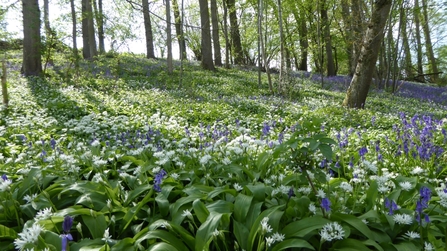Access improvement at Wern Wood Nature Reserve - Lewis Goldwater
The midweek work party volunteers and our nature reserve wardens have been working on reinstating fencing, the access paths and boardwalks at Wern Wood near Bredwardine. This small ancient woodland has been thinned in the last couple of years and the previous permitted path was damaged during this work. However with the extra sunlight reaching the woodland soil, the ground flora has responded spectacularly, with great displays of ramsons, bluebells, moschatel and yellow archangel especially on the northern slopes. Visitors at this time of year may also spot toothwort close to the entrance gate. This is an ancient woodland indicator plant that is unusual because it lacks the green chlorophyll that most plants have. Instead of deriving its sugars from photosynthesis, it is parasitic on elm and hazel.





